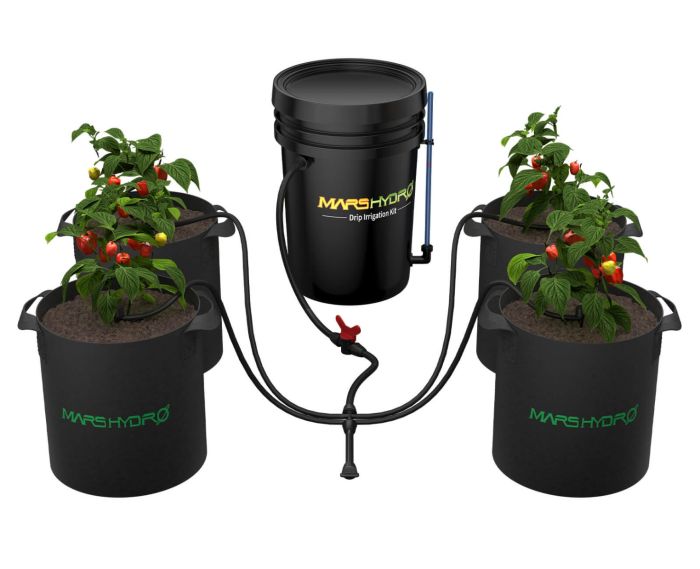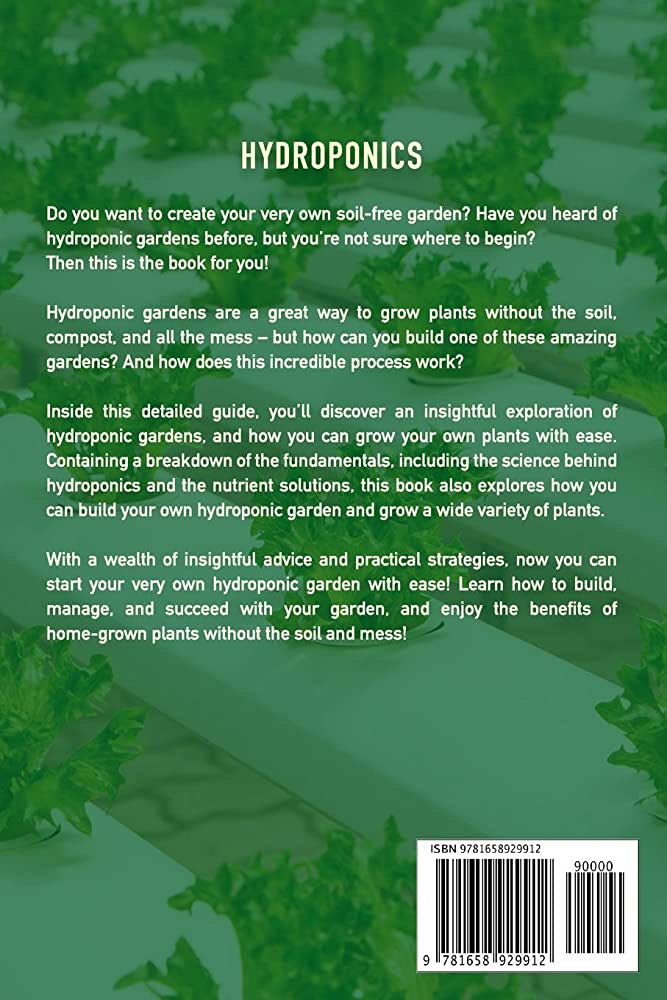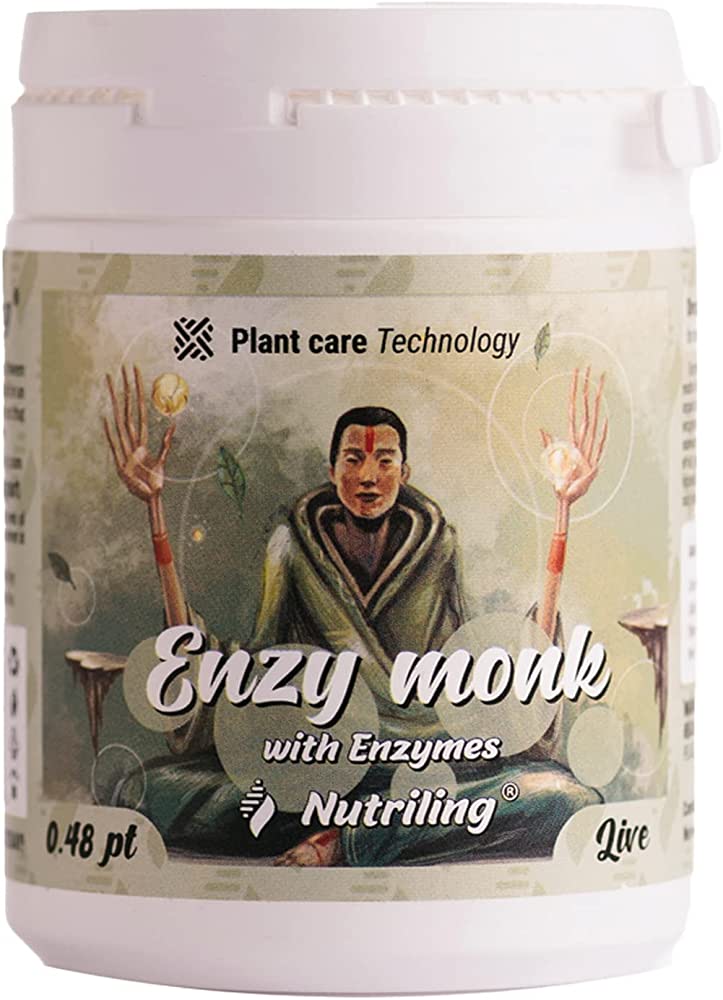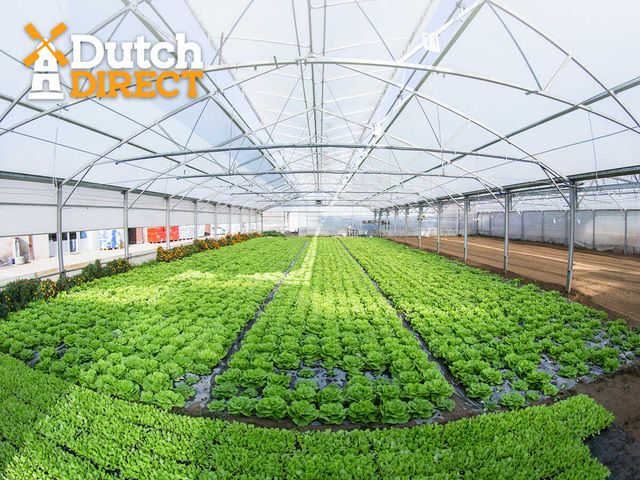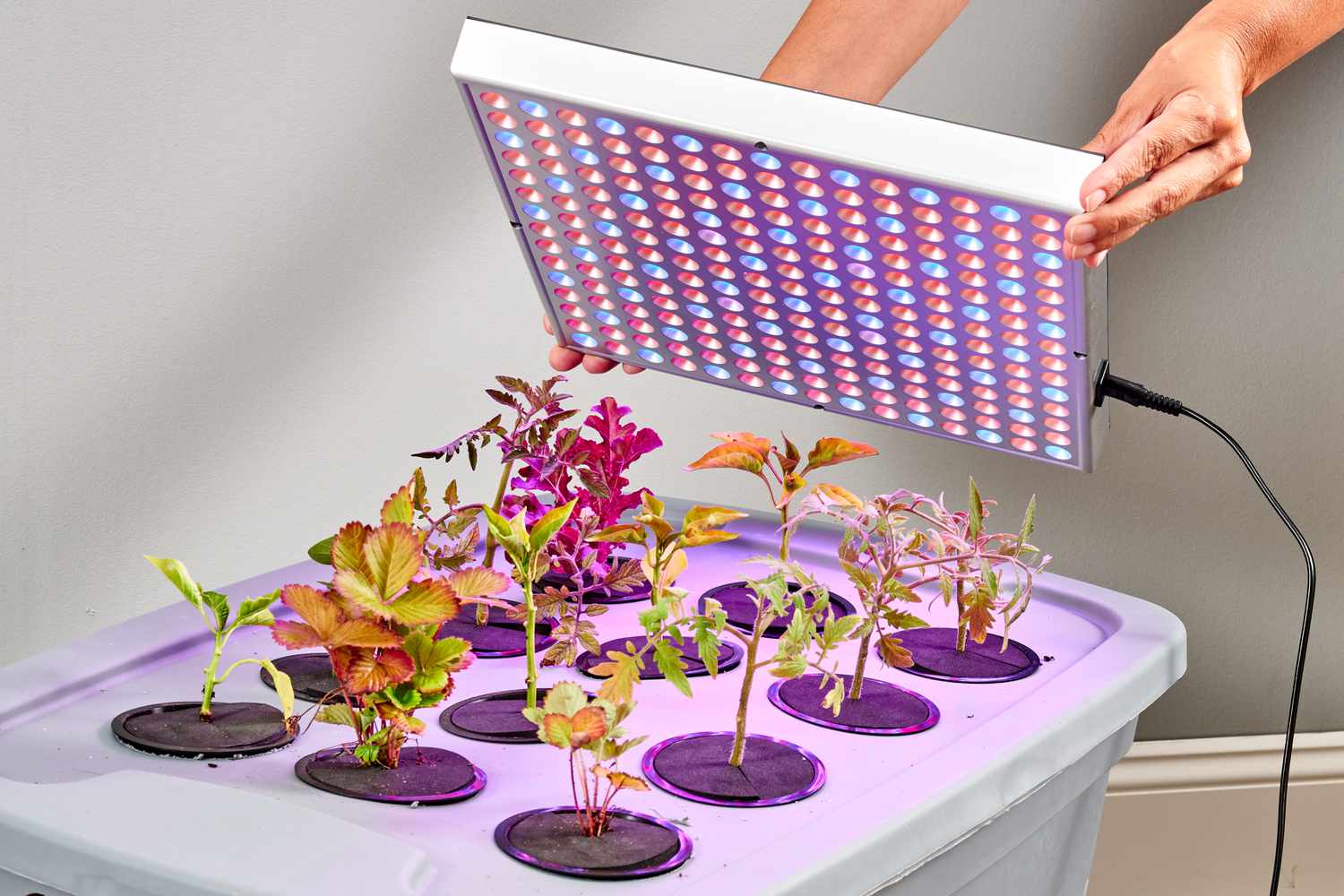Hydroponic drip irrigation systems deliver water and essential nutrients to plants, enabling them to grow without soil. These systems are characterized by their efficiency, precision, and ease of use.
Hydroponic drip irrigation systems are a popular choice for many growers because they offer high precision in delivering water and nutrients to plants while using minimal resources. Plants receive the necessary nutrients through a water-soluble fertilizer solution that is delivered through drippers.
These systems can be customized based on the needs of the plants and can be scaled easily to accommodate various growing spaces. Additionally, hydroponic drip irrigation systems conserve water by eliminating runoff and minimizing water waste. In this article, we will explore the benefits and different types of hydroponic drip irrigation systems.

Credit: www.homedepot.com
How Hydroponic Drip Irrigation Systems Work
Hydroponic drip irrigation systems are a popular method of growing plants in a soil-free environment. These systems work by providing plants with the nutrients they need to grow through a drip irrigation system. We will break down how these systems work, the components they require, and the benefits of each component.
Detailed Breakdown And Explanation Of The System
Hydroponic drip irrigation systems work by using a water pump to supply nutrient-rich water to the roots of plants. This is done through a series of tubes and pipes that are connected to a drip manifold. The drip manifold ensures that the water is distributed evenly to the plant’s root system.
As the water passes through the growing medium, the plants absorb the necessary nutrients and water, which allows them to grow healthily.
Components Needed For The System To Function Properly
To create a functional hydroponic drip irrigation system, several components are needed:
- Water pump: A water pump is a crucial component of the system, as it pumps the nutrient-rich water throughout the system.
- Nutrient solution: The nutrient solution contains the necessary minerals and nutrients required for healthy plant growth.
- Growing medium: The growing medium supports the plant’s root system while also providing stability for the plant.
- Drip manifold: The drip manifold ensures that the water is distributed evenly to each plant’s root system.
- Pvc pipes and connectors: The pvc pipes and connectors transport water from the water pump to the drip manifold.
Benefits Of Each Component
Each component in a hydroponic drip irrigation system plays a vital role in achieving optimal plant growth and yield. Here are the benefits of each component:
- Water pump: The water pump ensures that water is distributed evenly to the plant’s roots, promoting healthy growth and increasing the yield.
- Nutrient solution: The nutrient solution provides plants with the necessary minerals and nutrients required for healthy growth, promoting higher yields and healthier plants.
- Growing medium: The growing medium provides support for the plant’s root system and also helps with nutrient absorption, promoting optimal growth and increasing yield.
- Drip manifold: The drip manifold ensures that the water is distributed evenly to each plant’s root system, promoting uniform growth and yield.
- Pvc pipes and connectors: The pvc pipes and connectors transport water throughout the system, promoting constant and adequate water distribution, promoting plant growth.
Hydroponic drip irrigation systems are an excellent way to grow plants as they eliminate the need for soil while providing all the necessary nutrients, minerals, and water needed for healthy plant growth. By understanding the key components of these systems, you can create one that works efficiently and promotes optimal plant growth while also maximizing yield.
Types Of Hydroponic Drip Irrigation Systems
Hydroponic drip irrigation systems are a popular choice for growing crops due to their efficiency in delivering nutrients to the plants. There are different types of hydroponic drip irrigation systems that are available in the market.
Comparison Of Various Systems In The Market
Let us look at some of the various systems that are available in the market:
- Basic drip irrigation system: This system involves a pump that runs to push the nutrient solution through the tubing system to the plants’ drip points.
- Gravity fed drip system: This system relies on gravity to provide nutrients to the plants. It is cheaper and simpler to set up compared to other systems.
- Recirculating drip system: Recirculating drip systems have a reservoir that stores the nutrient solution, which is then pumped through the tubing to the plants. The excess nutrient solution is then collected and returned to the reservoir.
- Pressure compensated drip system: This system maintains an even flow of the nutrient solution to each plant by controlling the pressure at each drip point.
Pros And Cons Of Each System
Each system has its advantages and disadvantages. Here are some of the pros and cons of each system:
Basic Drip Irrigation System
Pros:
- Easy to set up and cost-effective.
- Minimal water usage, which is good for the environment.
- Reliable and low maintenance.
Cons:
- Not ideal for large-scale operations as it requires manual monitoring.
- The pump can malfunction, leading to inadequate nutrient delivery.
- It may be difficult to control the nutrient distribution to each plant.
Gravity Fed Drip System
Pros:
- Simple and cheap to set up.
- Ideal for home gardeners or small scale operations.
- Low maintenance.
Cons:
- Limited to a small number of plants.
- Nutrient distribution to each plant may not be even.
- The nutrient solution may not reach all corners of the plant’s root system.
Recirculating Drip System
Pros:
- Efficient use of water and nutrients.
- Allows for more precise control over nutrient delivery.
- Can be scaled for larger operations.
Cons:
- Higher initial costs due to the need for a reservoir and recirculation system.
- Requires monitoring to ensure proper nutrient balance.
- Prone to nutrient build up, which can be damaging to plants.
Pressure Compensated Drip System
Pros:
- Even nutrient distribution to each plant.
- Conserves water and nutrients.
- Provides constant nutrient delivery with minimal monitoring required.
Cons:
- Expensive to set up compared to other systems.
- May require additional equipment to reduce pressure variations.
- Can be difficult to retrofit to existing systems.
Factors To Consider When Choosing A Specific System
Before choosing a specific hydroponic drip irrigation system, there are several factors to consider:
- Budget: Different systems have different installation costs, maintenance fees and operational costs. Choose a system that falls within your budget.
- Scale: The size of your operation influences the type of system you choose. Smaller operations may benefit from a gravity-fed system while larger operations may require a recirculating system.
- Crops: Different crops require differing levels of nutrients and water. Select a system that can provide the right balance of nutrients.
- Environment: Climate, humidity, and temperature all play a role in plant growth. Consider a system that takes these factors into account.
- Maintenance: Ensure you select a system that matches your technical abilities and availability to carry out maintenance.
Understanding the different types of hydroponic drip irrigation systems available, their pros and cons, and the factors to consider when choosing a specific system, can help you make an informed decision when starting your hydroponic garden.
Building Your Own Hydroponic Drip Irrigation System
Hydroponic drip irrigation systems are a popular choice among garden enthusiasts and commercial growers alike. These systems offer a controlled, automated, and efficient way to deliver nutrients and water to plants without the need for soil. If you’re interested in building your own hydroponic drip irrigation system, here are some essential materials, instructions, and tips to get you started.
Materials Needed For Building The System
To build your hydroponic drip irrigation system, you’ll need the following materials:
- Reservoir or container: Choose a large container or reservoir to hold your nutrient solution, with a minimum capacity of five gallons.
- Water pump and tubing: A water pump with 1/2 inch tubing will help circulate the nutrient solution from the reservoir to the plants.
- Drip emitters and tubing: Drip emitters help deliver a constant water supply to your plants. You’ll need 1/4 inch tubing to attach the emitters to the water pump.
- Growing tray: Select a tray that can fit your chosen plants and has drainage holes to prevent water buildup.
- Growing medium: Hydroponic growing mediums include coco coir, peat moss, or perlite.
- Nutrient solution: Purchase a nutrient solution that’s specifically formulated for hydroponic growing.
Instructions On Constructing The System
Follow these steps to construct your hydroponic drip irrigation system:
- Drill a hole in the top of your storage reservoir for the water pump cord to fit through.
- Attach the tubing to the water pump, and place the pump in the reservoir.
- Set up your growing tray and fill it with your chosen growing medium.
- Place the drip emitters into the tubing and attach the tubing to the water pump.
- Turn on the water pump and watch as the nutrient solution is delivered to your plants.
Tips And Tricks For Maintenance And Upkeep
To keep your hydroponic drip irrigation system running smoothly, follow these tips:
- Monitor ph levels: Check the ph of your nutrient solution regularly to ensure that it’s in the optimal range for your plants.
- Check for clogs: Check your emitters and tubing for clogs due to debris or mineral buildup, and clean them as needed.
- Clean your system: Empty and clean your reservoir regularly to prevent bacteria and algae growth.
- Monitor water temperature: Make sure the nutrient solution temperature stays within the ideal range for your plants.
- Use a timer: Set a timer for your water pump to ensure that your plants receive a consistent water supply.
Hydroponic drip irrigation systems offer a fantastic way to provide a controlled and efficient watering system for your plants without soil. Building your own system requires six main components, which we’ve outlined above. With proper maintenance, upkeep, and regular checks, your system can provide a steady and productive source of fresh produce.
Maximizing Efficiency And Productivity With Hydroponic Drip Irrigation
Hydroponic drip irrigation systems have become increasingly popular among farmers and gardeners because they use less water, reduce labor, and maximize yields. This system provides nutrients and water directly to the plant roots through the use of a drip line.
Here are some best practices to optimize plant growth and yield and comparison of efficiency and productivity with traditional methods.
Best Practices For Optimizing Plant Growth And Yield
Hydroponic drip irrigation systems are efficient in providing plants with water and fertilizers. However, to get the most out of your system, here are some best practices:
- Start by choosing the right growing medium and plant type. Plants that grow well in hydroponic systems include lettuce, herbs, and strawberries.
- Keep the nutrient solution at the right ph level. This ensures that nutrients are available to the plants. A ph range of 5.5-6.5 is ideal for most plants.
- Ensure that your system is well-ventilated to avoid diseases.
- Monitor plant growth and adjust the nutrient solution depending on the plant’s requirements.
- Provide adequate lighting, temperature, and humidity for your plants.
How To Monitor And Adjust The System
Monitoring and adjusting your hydroponic drip irrigation system is essential to ensure optimal yield. Here are a few steps you can follow:
- Check your irrigation system daily. Confirm that all drip lines are working correctly.
- Monitor the ph and electrical conductivity of the nutrient solution weekly.
- Adjust the solution and ph levels depending on plant requirements. If the ph is too high, add phosphoric acid to lower it. If it’s too low, add potassium hydroxide or potassium bicarbonate to increase it.
- Inspect the plants and the growing medium weekly. Remove any dead leaves or sickly plants.
Comparison Of Efficiency And Productivity With Traditional Methods
Hydroponic drip irrigation systems provide substantial benefits over traditional soil-based methods. Here are a few comparisons:
- In hydroponic systems, plants grow two to three times faster than in soil-based systems.
- Hydroponic systems use 90% less water than soil-based systems. This makes them an ideal option in areas where there is a water shortage.
- In hydroponic systems, there is minimal use of pesticides and herbicides, making the plants healthier and tastier.
- Hydroponic systems require less labor than soil-based systems. This is because there is no weeding, hoeing or soil preparation involved.
To summarize, hydroponic drip irrigation systems allow farmers, and gardeners to maximize efficiency and productivity while reducing water usage and labor costs. By following the best practices mentioned above, farmers will undoubtedly increase their yields and produce healthy crops.
Frequently Asked Questions For Hydroponic Drip Irrigation Systems
What Is A Hydroponic Drip Irrigation System?
A hydroponic drip irrigation system is a self-watering system that supplies nutrients and water to plants continuously.
How Does A Hydroponic Drip Irrigation System Work?
The system works by slowly dripping nutrient-rich water directly onto the roots of the plants in a soil-free environment.
What Are The Benefits Of Using A Hydroponic Drip Irrigation System?
Using a hydroponic drip irrigation system conserves water, maximizes crop yield, and reduces the risk of soil-borne diseases and pests.
What Materials Are Needed To Set Up A Hydroponic Drip Irrigation System?
You will need a water reservoir, a pump, tubing, a timer, growing trays, and a nutrient solution, among other materials.
How Often Should I Water My Plants Using A Hydroponic Drip Irrigation System?
The frequency of watering depends on the needs of the plants and the type of nutrient solution being used. Generally, plants should be watered every 3-4 hours.
What Types Of Plants Are Suitable For Hydroponic Drip Irrigation Systems?
A wide variety of plants, including leafy greens and herbs, vegetables, and fruits, can thrive in hydroponic drip irrigation systems.
Conclusion
As we conclude this article on hydroponic drip irrigation systems, it’s clear that this method of growing plants has immense benefits. It’s a more sustainable and efficient means of production that allows farmers to grow high-quality crops without having to use soil.
Drip irrigation also helps reduce the amount of water used and minimizes the risk of crop diseases. It enables farmers to control the amount of nutrient uptake by plants and reduce the risk of chemical contamination of soil and water.
Investing in a hydroponic drip irrigation system may be costly, but the long-term benefits are worth it. As more farmers adopt this method, we can sustainably feed a growing global population without compromising our planet’s resources. So, if you’re looking to optimize your crop yield and take a step towards sustainable agriculture, consider hydroponic drip irrigation for your farming operations.
- Why Ease of Use is Crucial in Trucking Dispatch Software - September 22, 2024
- Better Communication With Dispatchers: How Trucking Dispatch Software Can Optimize Operations - September 7, 2024
- Maximizing Efficiency: The Importance of Accurate Location Tracking for Trucking Operations - August 23, 2024
